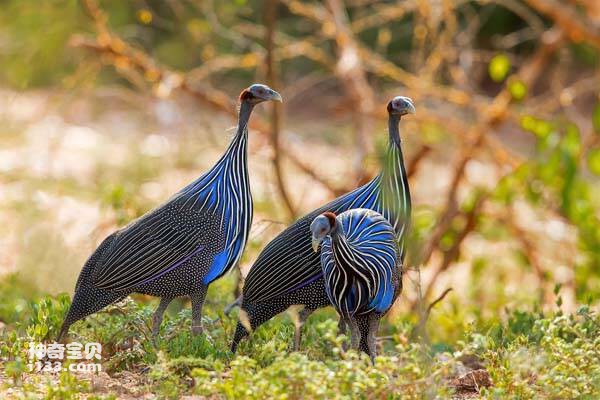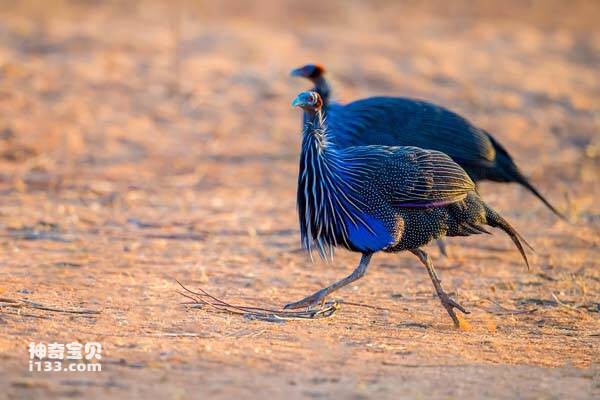Acryllium vulturinum
IUCN
LCBasic Information
Scientific classification
- name:Acryllium vulturinum
- Scientific Name:Acryllium vulturinum,Vulturine Guineafowl
- Outline:Landfowl
- Family:Gallinariformes Gallinariidae Condor-Gallinariidae
Vital signs
- length:61-70CM
- Weight:1100-1800g
- lifetime:8-12years
Feature
It is one of the largest species in the family, named for its head and neck like a vulture
Distribution and Habitat
Origin: Ethiopia, Kenya, Somalia, United Republic of Tanzania.
It inhabits forest and grassland areas, luxuriant undergrowth and forest margins. Breed in the dry and open habitats of savannas.
Appearance
The vulture chicken is a large bird. It is about 61-70 cm long and weighs 1100-1800 g, with males slightly larger than females. It is the largest of the beaded chickens with a small round head. They have a longer neck, legs, and tail than other chicken species, and short, rounded wings. The adult bird has a naked blue face and a black neck, and although no other beaded chicken has a crested head, this species looks particularly like a vulture because of its long neck and head, so named from the sutras. The neck is brown feathers, and the body feathers are a mixture of cobalt blue, lavender, black and white, rich and colorful. Long legs, running through the shrub canopy, can last 50-100 meters.
Juvenile plumage is mainly grayish brown with spots and blue underbody. It grows rapidly, with feathers appearing on the wings after about two weeks and the chest feathers turning blue after another six weeks. It takes a year for all the feathers to turn into adult birds.
Details
Vulturine Guineafowl (scientific name: Acryllium vulturinum), no subspecies.

Vulture chicken live in clusters, each group of about 15-30, good at flying and roost in trees, flying ability is very strong, but the long-term land life has changed its life habits, often run away in all directions when in danger rather than spread wings, or make a harsh call to retreat away from the intruder. Don't migrate. During the non-breeding season small groups feed and communicate with each other using short calls.
Vulture-bead chickens dig underground with their claws for seeds, tubers, small insects, etc. It feeds on seeds, tubers, buds, buds, berries, grass, leaves, stems, roots, insects, spiders, and scorpions. Going into the bush to eat the fleshy parts of berries, fruits and insects will provide them with water.

Large flocks of vulture birds can often be seen breeding in pairs near puddles. The marriage is monogamous, the nest is built on the ground in hidden bushes, the hens lay 7-18 eggs each time, the incubation period is about 24-28 days, the chicks can fly when they are two weeks old, after a month, they grow almost like adult birds, and they are sexually mature at 1 year old. Life span: 8-12 years.
Listed on the International Union for Conservation of Nature (IUCN) 2016 Red List of Threatened Species ver 3.1 - Not Threatened (LC).
Protect wild animals and eliminate wild meat.
Maintaining ecological balance is everyone's responsibility!








